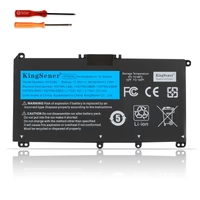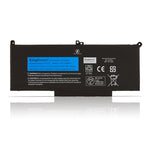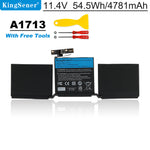You have no items in your shopping cart.
How to Safely Transport Different Types of Batteries?

In today's world, batteries have become a necessity. They power a wide range of devices, from handheld gadgets to automobiles and more. With the increasing popularity of dry, alkaline, lead-acid, and lithium-ion batteries, it is crucial to store and transport them properly to prevent accidents and ensure safety.
Improper transportation and storage of batteries can pose several potential hazards: including overheating, fire or explosion, electric shock from battery charger, and thermal burns.
Tips for Safe Transport of Batteries
Various battery types have distinct requirements when it comes to transportation and storage.
1. Lead-acid battery
When transporting lead-acid batteries, it's important to take precautions to ensure safety and prevent accidents. These batteries are classified as Class 8 Hazardous Goods (Corrosive Substances) and can cause fires if short-circuited, as well as injury to people in the event of an acid leak.
To mitigate these risks, only one type of dangerous substance should be carried during transportation. Additionally, it's recommended to use non-metallic containers such as UN 1G, 4G, or 1H2 to pack the batteries, depending on the situation. Non-conductive plastic strapping and stretch wrap should also be used to prevent the batteries from moving within the container.

Kingsener HT03XL Laptop Battery Replacement For HP 14-ma0312ng 14-df1000 14m-dh1003dx 14s-cr2002TU 41.7WH
2. Nickel-based battery
When it comes to shipping, nickel-based batteries have fewer restrictions than other types. To avoid electrical shorts and fires, packaging precautions similar to those used for lead-acid batteries should be taken. And it's important to not store or transport smaller battery packs in metal containers. To prevent short circuits, each battery should be wrapped individually in plastic bags if there is a risk.
3. Li-ion battery
Today, lithium-ion batteries are commonly used (For example, the common 18650 lithium battery), but they can be a fire or explosion risk. As a result, when transporting these batteries, it's important to take appropriate packaging measures. Properly packaging lithium-ion batteries can help minimize the risk of hazardous heat dissipation. Additionally, to decrease the likelihood of accidents during transport, it's recommended to store lithium-ion batteries separately in transparent plastic bags or packaging, and to cover the battery terminals with transparent tape.
4. Nickel-cadmium wet battery
Just like with lead-acid batteries, these batteries should only be packed in UN 1G, 4G, or 1H2 non-metallic containers. It's important to make sure that the container you use can handle the weight of the battery and has non-conductive packaging to prevent rubbing or movement during transportation.
5. Wet lithium-ion battery
Lithium-ion batteries that have been in contact with water or oil are referred to as wet lithium-ion batteries. These types of batteries can be dangerous as they may produce sparks or heat during transport and storage. So it's important to avoid transporting wet lithium-ion batteries and to take precautions to prevent excessive moisture exposure during transportation and storage. Only if you're confident in the battery's packaging integrity can you transport it without worrying about moisture.
A Simple Guide to Storing and Packing Batteries for Shipping
1. To prevent a short circuit, keep the battery away from any metal objects.
2. Properly label or mark the shipment to indicate if it contains dangerous goods.
3. Do not store the battery in an area with extreme temperature or humidity.
4. If the battery leaks, pack it separately and handle it with care.
5. When packaging the battery, ensure that it can withstand transportation conditions, such as bumps, turns, and acceleration.
6. Only chemically compatible batteries may be packed together.
7. Use non-conductive materials for inner packaging to prevent short-circuiting or damage to the battery terminals.
8. Do not open the device with the battery installed during transport.
9. Lithium-ion batteries should be stored in a charged state, preferably at 40%, to prevent excessive battery voltage from triggering sleep mode.
10. If a Li-Ion battery remains below 2.00/V/cell for more than a week, it should be discarded. If the voltage does not recover normally after storage, it should also be discarded.
Finally, if you want to learn more about batteries, please visit: BatteryMall.com/support.








